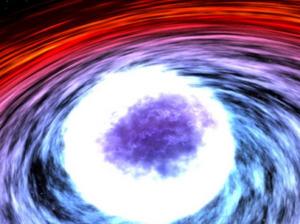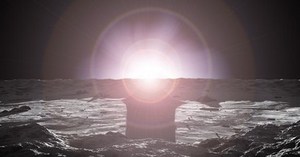Using NASA's Rossi X-ray Timing Explorer (RXTE) satellite, a team of four astronomers has discovered a timing mechanism that tells them exactly when a superdense star will let loose incredibly powerful explosions.
"We found a clock that ticks slower and slower, and when it slows down too much, boom! The bomb explodes," says team leader Diego Altamirano of the University of Amsterdam in the Netherlands.

|
| ©NASA
|
| A thermonuclear explosion as it engulfs an entire neutron star.
|
The explosions occur on a neutron star, which is a city-sized remnant of a giant star that exploded in a supernova. But despite the neutron star's small size, it contains more material than our sun. The neutron star is not alone in space. It has a companion star, and the two objects orbit each other every 3.8 hours. This double-star system is known as 4U 1636-53 for its sky coordinates in the Southern Hemisphere.


